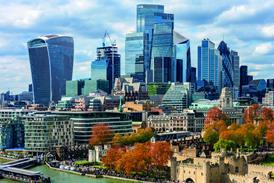The demand is there for a broader range of uses but the government has a vital role to play in revitalising our town and village centres, writes Richard Steer

The phrase “death of the high street” has become such a cliché that it risks sounding like the moan of a nostalgic uncle who misses Woolworths and frets about the demise of the local butcher. But clichés exist for a reason – and when the House of Lords built environment cross-party committee spends months investigating the plight of our town centres – concluding that they are under existential threat – and the government responds with a mixture of vague support and “watch this space” promises, then it is clear we are not crying wolf.
This is a crisis that has been a long time in the making. Online retail, out-of-town shopping parks, changing consumer habits, and – let’s not forget – a global pandemic that shuttered stores for months at a time have collectively bludgeoned high street footfall.
You cannot blame the average shopper for clicking “buy now” when the alternative is paying more to park in a town centre lined with shuttered windows and charity shops. The government is not helping on-site retail when fiscal measures like the digital services tax are so little compared to taxes paid by traditional retailers. With this uneven playing field, online retailers like Amazon, ASOS and Shein have an immediate advantage over the bricks rather than clicks retail sector.
The idea of popping into your GP’s office, grabbing a coffee and renewing your driving licence in the same 20-minute stroll sounds utopian and entirely possible
The committee’s report recognises this. It says the retail-led high street is probably a thing of the past. This is hardly revolutionary, but it is important.
It opens the door to more mixed-use development – town centres that are not just places to shop, but hubs for community services, leisure, dining and even healthcare. The idea of popping into your GP’s office, grabbing a coffee and renewing your driving licence in the same 20-minute stroll sounds utopian and entirely possible if we get the planning and funding right.
Of course, that is the rub. The committee offered a wide range of sensible proposals, many of them tied, as always, to local authority engagement and central government funding. The reaction from the government was a classic blend of cautious agreement and deferral. Yes, they nodded, the high street matters. Yes, let’s simplify funding, empower local leaders, support markets and make access easier. But – and it is a very big “but” – we will be fleshing this out “in the coming months”.
With over 13,000 stores disappearing in 2024, these are not all just faceless chains. Many are independent businesses such as the bakers, butchers and booksellers that give high streets their identity. Their struggles are compounded by rising rents, sky-high business rates and an incoherent patchwork of grants and relief schemes that require a small army to navigate.
One of the most practical recommendations was the call for better business rates relief, particularly for parity between markets operated by local authorities outside London and those within – there is no logical reason why a thriving Saturday market in Derby should be treated less favourably than one in Camden – yet the government response here was muted. It referred instead to existing schemes like “transitional relief”, which many would argue do not go nearly far enough.
Then there is the idea of high street rental auctions – a good concept in principle that allows local authorities to force vacant shops back into use. But its success depends entirely on local capacity.
Let’s not overlook the recommendation to expand “use class E”, making it easier to repurpose empty retail spaces for leisure or community uses. The government demurred, saying flexibility must be balanced with local planning control. Fair enough – but inaction also risks paralysis. As things stand, we are trying to fight a 21st-century crisis with a 20th-century planning framework.
It is not the lack of demand that is killing our high streets; no, it is the financial metrics
Food and beverage outlets remain a vital piece of the mixed-use jigsaw and contribute vastly to the creation of place and we should still celebrate this. We know that high streets need to bring in other uses, and many shopping centres need to be repurposed, however we should also celebrate the fact that the postwar model of judging a place by the success of retail alone has moved on. This has allowed us to return to the pre-war model of a vibrant mix of uses within building blocks which respect the heritage and culture of a location and which also allow the community to support in defining the mix.
It is not the lack of demand that is killing our high streets; we are seeing demand for education and health uses sit comfortably alongside the retail and leisure components and the essential residential offering. No, it is the financial metrics – with values not supporting viability and construction costs at a much higher place than pre-pandemic – that are the challenge.
The primary shopping centres have worked hard to get to only 5% vacancy rates. However the public sector intervention needed in terms of central government streams no longer exists.
The high street is not yet dead, but it is in need of major surgery. The government can play an essential role here – if it wants to.
Richard Steer is chair of Gleeds Worldwide and a ��Ȧ The Future Think Tank commissioner























No comments yet